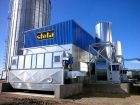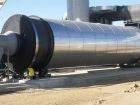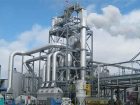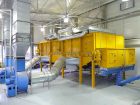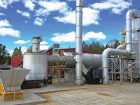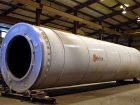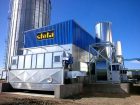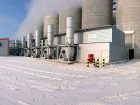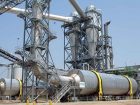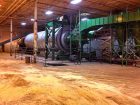
Equipment spotlight: Dryers
October 3, 2016
By Canadian Biomass Staff Report
Oct. 3, 2016 - The newest drying technology available for Canada’s wood pellet industry.
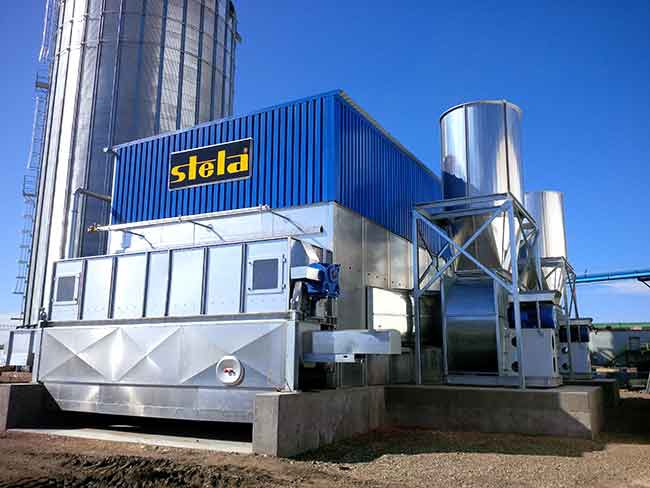 The newest drying technology available for Canada’s wood pellet industry
The newest drying technology available for Canada’s wood pellet industry
STELA
www.stela.de
Stela low-temperature belt dryer is a highly efficient drying process which can be used in many different industrial segments and product lines, including for pellets and microchips, particle board, OSB-strands and sawdust, sewage sludge, digestate, and bark, wood chips and wood off-cuts. Stela’s low-temperature belt dryer for pellets and microchips realizes defined residual moisture of 8 to 12 per cent for the production of pellets and wood briquettes. The dryer utilizes low-calorific heat from cogeneration and ORC processes, and can be applied in pellet plants and sawmills. The dryer increases energy efficiency by circulating air system and vapours condensation.
Player Design Inc.
www.playerdesign.net
PDI offers complete drying island packages including equipment supply, design and installation. PDI drying systems are designed to meet the diverse needs of today’s manufacturers. The result is innovative equipment that provides cost-effective and environmentally compliant performance, responsive to even the most stringent guidelines. Our customized solutions use advanced technology to ensure a consistent, quality finished product, giving our customers a competitive edge.
KAHL
www.akahl.de/en
With the new KAHL Fabric Belt Driers the input material and the throughput capacities vary significantly. The product is turned over in the drier by means of specially adapted devices so that a very uniform final moisture content of the product is obtained. A distinctive feature of the KAHL fabric belt drier is the special, tightly woven plastic fabric belt which fulfils two functions: transport of the product to be dried, and filtration of the exhaust air to ensure that the legal limit value of the dust loading in the exhaust air is not exceeded.
Swiss Combi
www.swisscombi.com
The drying technology of Swiss Combi is known for its robust design, its simple handling as well as efficiency and low operational costs. Swiss Combi belt dryers meet highest dust emission standards causing less than 5mg/Nm3 of dust emissions. In terms of thermal efficiency of the drying process, Swiss Combi achieves one of the highest efficiencies with its conventional technology. Thermal efficiency combined with optimum product quality results in a two-layer drying system, which has been time-proven over the last 30 years and for more than 100 installed belt dryers. Swiss Combi belt dryers are available up to 28t/h capacity of water evaporation and 424m2 drying surface.
Earth Care Products
ecpisystems.com
The Z8 rotary dryer is a state of the art design by Earth Care Products. The patented Z8 dryer is an eight zone, reverse flow convection air dryer. Hot gases and wet material enter the front of the drum, pass through the drum in a serpentine path and exit together at the discharge ducting. This drum design allows drying of multiple material moisture and particle sizes without over-drying, volatilizing and blue haze issues associated with conventional dryers. The dryer has stainless steel skin with air jacket for insulation and runs on forged steel tracks that are attached to the dryer with adjustable wedges. A stationary inlet endplate allows easy material entry into the drum and an access door for ease of maintenance.
Uzelac
www.uzelacind.com
Uzelac Industries has rotary drying systems in operation worldwide. Uzelac Industries, Inc. brings over 40 years of industry experience to the table, and a solid foundation in custom design and fabrication allows us to be a leading wood dryer manufacturer. Uzelac team of experienced engineers and journeymen fabricators will design your system to match your requirements, whether you require single- or triple-pass drums, multiple cyclone systems or any type of emission control equipment.
GEA
gea.com
GEA is a leading supplier of industrial drying systems and offers numerous systems and technologies for drying wet solid feed materials. They custom tailor systems for each customer based on proven technology as well as testing and development. GEA designed ring dryers are appropriate for biomass applications. They incorporate a centrifugal classifier giving internal recirculation of semi-dried solids, effectively lengthening the retention time of larger particles in the dryer. Finer material, which dries rapidly, exits with
exhaust air.
TSI
tsi-inc.net/biomasswood/
TSI manufacturers rotary drum dryers for wood pellet plants. The advanced technology incorporated into the TSI design ensures gentle drying, with the wood chips not exceeding much above 100 C throughout the process. This retains maximum energy in the product and creates a safe operating environment. With gas recirculation and automatic classification within the drum these systems are highly energy efficient and offer an optimum cappex/productivity ratio. TSI offers their dryers as part of a complete package (dryer islands) that incorporate heat energy systems and pollution control equipment, all from a single source. Drums are sized to meet the client’s requirements up to a maximum capacity of over 500,000 tons a year of product through a single drum.
SolaGen
www.solageninc.com
SolaGen’s has 30 years of experience developing exceptional drying systems with experienced process engineering and equipment designs that are tailored to suit the specific material and load to be dried. Features like bolt-in flighting, replaceable tracks, and drive teeth allow for greater longevity at a lower maintenance cost. Rotary dryer systems are available with industrial quality for continuous operation; single and triple pass designs with diameters up to 20 feet; high efficiency with integration of stack gas recycle techniques; and systems can be direct fired or can utilize waste heat as an energy source. SolaGen utilizes proprietary computer software that accurately models a system’s mass/energy balance, which assists engineers in making the correct process sizing decisions so that actual performance meets, or exceeds, client’s expectations.
Print this page
